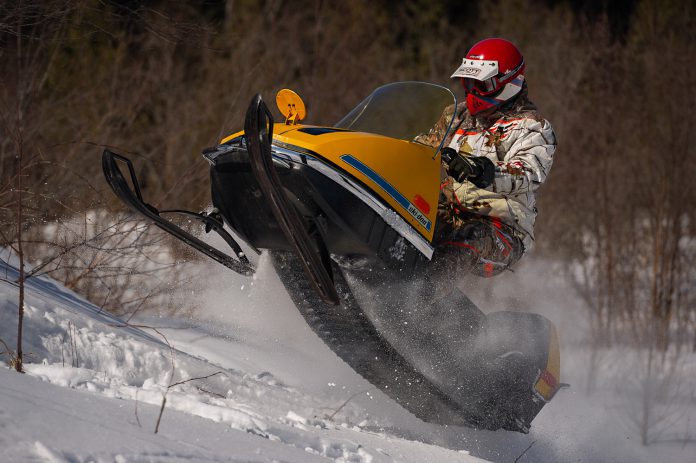It’s fun to watch the accelerating interest in vintage sleds. Sure, you’d expect the vast majority of people immersing themselves in restoring older snowmobiles would be “old guys” – snowmobilers who once rode these sleds decades ago and have fond memories of what snowmobiling was like “back then”.
Although that is somewhat true, it’s not completely accurate. When you go to swap meets and vintage shows it’s surprising to see how many of these collector sleds are owned by 20 and 30-something-year-old enthusiasts and how many relatively young people are shopping for used parts to complete a vintage project they’re working on.
The biggest draw toward vintage restoration is the hope of actually getting to ride the sled once you’re finished restoring it. There are countless organized ride-in events across the snowbelt every year (can’t be sure there’ll be too many this winter) where hundreds of classic sleds gather to swap stories and long-lost parts – perhaps even go for a ride with other collectors.
Failing the opportunity to visit events like these, it’s just a flat-out blast to get together with a bunch of other vintage junkies and go for a 30 or 40-mile tour, maybe to a specific destination, maybe not. The joy is in the riding.
So why are so many sleds being resurrected from junk piles and turned into fully operating examples of the past?
We think it has a lot to do with the hands-on mechanical work you can do on these sleds without great amounts of technology or electronic tools required to get them in shape. In contrast, today’s sleds are pretty complex and just tearing into one can be pretty daunting for a garage engineer.
The old stuff was painfully simple – carburetors, point ignitions – maybe a few with CDI boxes or oil injection – basic primary and secondary clutches, no electronic exhaust valves, digital gauges or onboard computers.
Purchase prices are cheap and availability is still pretty good- especially if you can score a barn find where the sled has been kept indoors and away from the elements for many years. Western Canada and the Midwestern USA have plenty of old vintage stuff stashed in garages and sheds waiting for someone to talk the owner – or descendants of the owner – into selling.
We think there’s a new trend starting in vintage too. As the leaf spring stuff gets harder to find, we’re pretty sure the demand for older IFS sleds will begin to increase. Sleds like the early to mid-‘80s Polaris and Arctic Cats and strut Yamahas like the SR-V and the Phazer will become attractive projects. Later versions of the first Ski-Doo MX-Z from the ‘90s, now pushing thirty years old, also make great restoration projects you can really enjoy riding once they’re finished.
The best thing about these more recent classics is that parts are readily available on sale from companies like Kimpex or from the back shelves of dealers who simply have to dust off an old box of goodies they’ve been babysitting for a few decades.
Companies like CVTech have complete rebuilt engines sitting on shelves waiting to be shipped for a lot of these sleds.
The best part is these more advanced oldies have much more evolved technology when it comes to suspension and clutching, making the finished ride experience a lot nicer for the owner.








